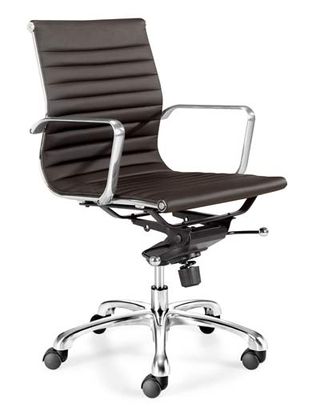Because presenting sitting down impacts so much of one’s presentation skills, there are some things to consider to ensure your effectiveness isn’t affected as well.
Body
When you sit to present, your back should not touch the back of the chair. Instead, lean forward into the table. If you’re presenting with colleagues, they should sit back when you present, giving you the table. Sit at the table where everyone can see you. The head of the table is preferred because it’s easier for everyone to see you, and you them. Sitting at the long side of the table – think of the U.S. President in photo ops at the White House – is less effective because people to your left or right must crane their necks to see you. It’s a pain in the neck (excuse the pun) if it’s a long meeting.
Gestures
Gesturing is as important when you sit as when you stand. Forget what your grandmother taught you. Your arms and elbows should be on the table so it’s easier to gesture. Your hands should not be in your lap or you will gesture under the table. Gestures need to be visual to be effective. Generally they’re best low, just off the table. Just as you do when presenting in a standing position, your gestures need to be precise, otherwise your gestures look like flopping fish. Also similar to standing, your gestures should never cover your mouth or face as they may diminish your volume.
Eye Contact
When seated, the most important element of eye contact is keeping your eyes up. Most presenters are reading something – a report, a board paper. So, their heads tend to bounce: they read a bit, lift their head and say it aloud, dip their head and read a bit more, lift their head and say more. If they could see themselves, they’d look like bobbing-head dolls on a car dashboard. Instead, rehearse by reading the entire sentence, message or thought. Then, lift the head and say the entire statement. It’ll also force you to consider what you’re actually saying.
Your Voice
The voice aurally presents your personality. It comes from a muscle – your voice box (the larynx) – and like an athlete, you should make sure this muscle is thoroughly warmed up before you use it. Your larynx, throat and mouth will also dry out quickly, because you will be speaking louder than a normal conversation, because you’ll be talking for longer than you normally speak, and because adrenaline will wick away moisture from your mouth. Keep your voice lubricated by keeping room temperature water nearby. Avoid the wrong foods. Milk products coat your larynx so you will do a lot of throat-clearing. Avoid chocolate because it too cases phlegm. Very hot or very cold drinks will stress your vocal cords. If possible, no big meals beforehand. If you smoke, avoid for an hour before you go on-stage.
Also, if you are speaking on the telephone or by conference (audio) call, your voice is the vital. Because all other body movement is removed, don’t let anything inside or outside the room distract from your voice. This includes people talking, papers shuffling or office noise. If possible, ask everyone to put their conference boxes on mute until they need to speak.
How do you make the decision to sit down vs stand up? Please add your thoughts and comments below.
This is Part Two on Presenting Sitting Down. Part One focusing on Presenting Standing Up, and includes the differences with Sitting Down.
Also, whether you stand or sit, know the key points about …


No comment yet, add your voice below!